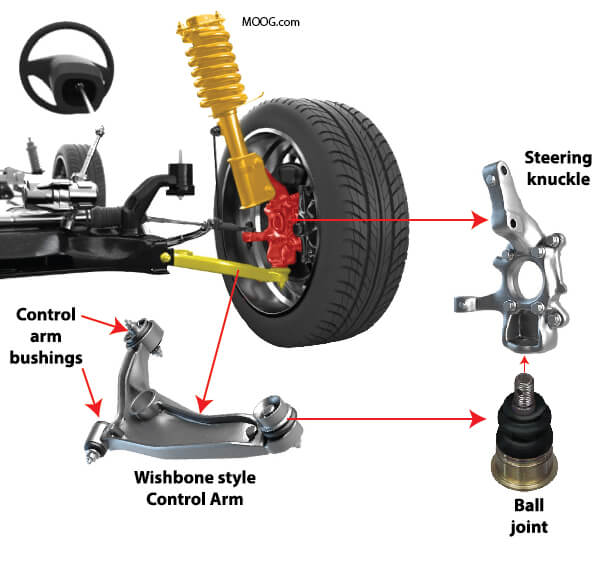Ball Joint Guide: Understand Your Car’s Suspension
How a ball joint works and how it fails
A ball joint sits on the outer end of the control 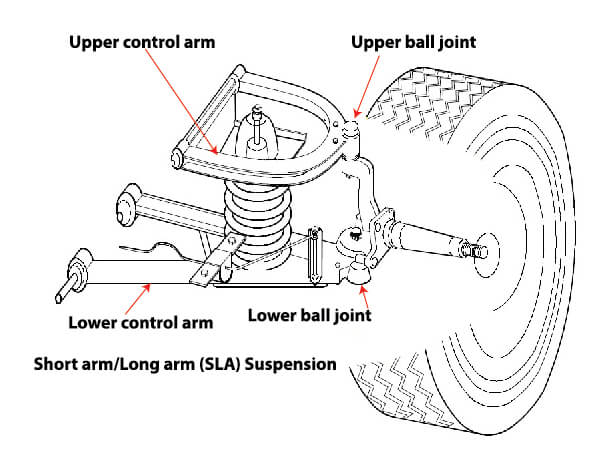 arm and acts as a pivoting joint to attach the steering knuckle to the vehicle. It’s a ball and socket (much like a hip joint) arrangement that allows the steering knuckle to rotate left and right, and up and down.
arm and acts as a pivoting joint to attach the steering knuckle to the vehicle. It’s a ball and socket (much like a hip joint) arrangement that allows the steering knuckle to rotate left and right, and up and down.
The joint consist of a hardened steel ball, a tapered stud shaft and a hardened steel casing filled with grease. A protective rubber boot connects to the casing and the stud to keep the grease in the socket.
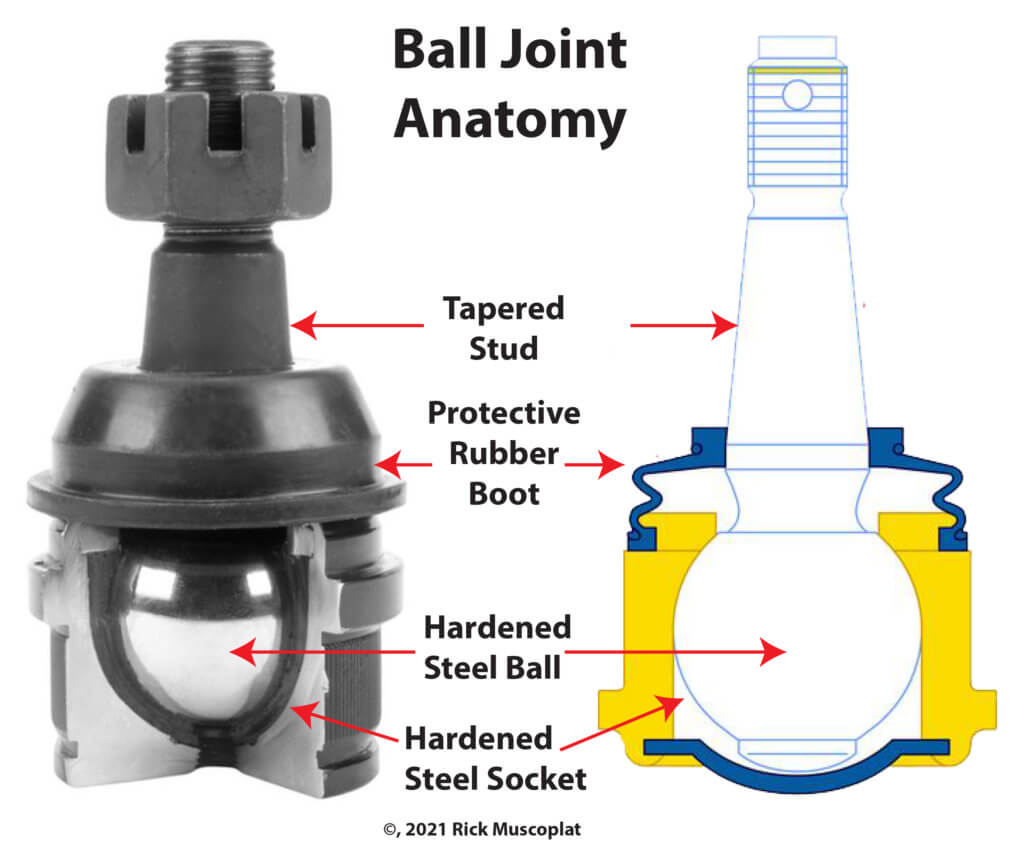
How many joints are on a vehicle?
The number of joints depends on the type of suspension in your vehicle. Some vehicles (usually light trucks) have a short-arm/long-arm (SLA) suspension. In that design, there are two control arms on each side of the front suspension and two joints; so four in total.
However, McPherson strut suspensions only have one control arm on each side, so two joints for the front suspension.
In a McPherson strut setup, the lower joint allows up/down and left right movement, while a bearing in the strut mount allows the upper portion of the strut to turn left/right.
What causes ball joint failure?
The #1 cause of joint failure is damage to the protective boot. Once the boot is compromised, it can lose grease and allow water and road grit to enter the ball and socket. The road grit grinds away at the surfaces of the ball and socket, causing wear and play. In worst case situations, the wear can be so great that the ball separates from the socket. At that point the wheel collapses under the vehicle.
Average joint life
Ball joint life depends on the suspension system design. Some poorly designed light trucks wear out the joints every 40,000 miles even when the boots are intact. However, on average, ball joints usually last between 70,000 and 150,000 miles.
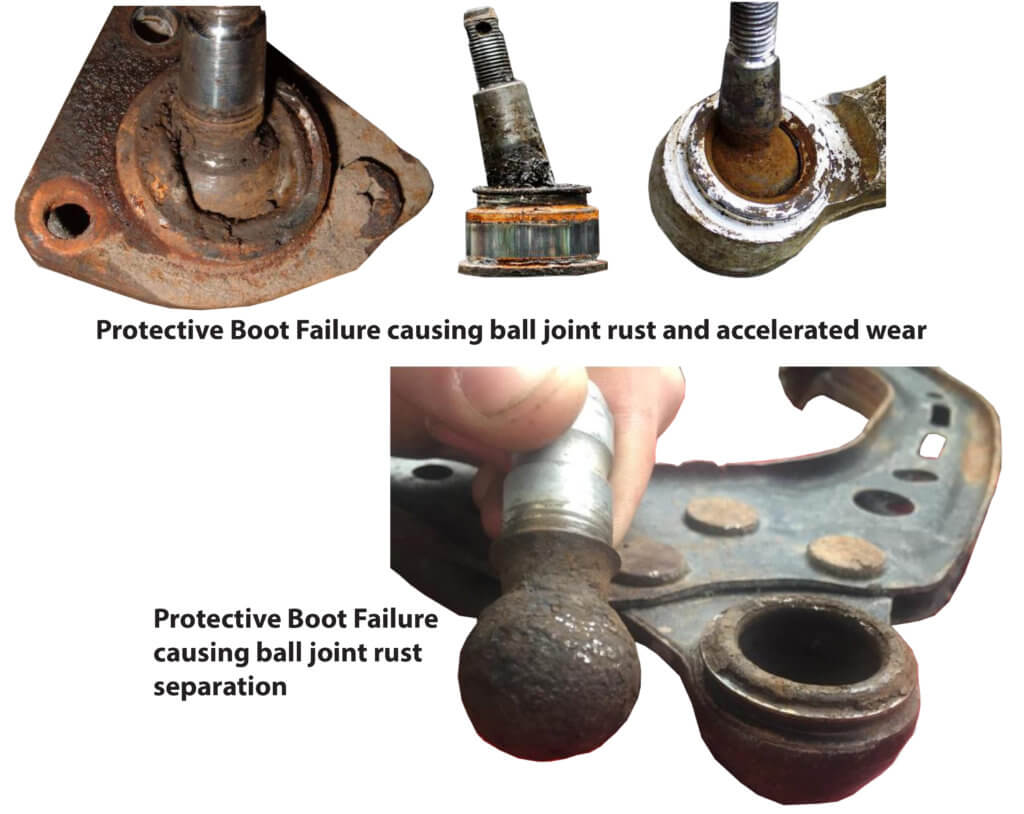
Loss of grease and water intrusion are the two most common causes of ball joint failure
Symptoms of a worn or damaged joint
• Clunk noise, knocking noises, when going over bumps
• Creaks or squeaks when the suspension moves up or down or during turning maneuvers
• Drifting to the side
• Shaky or loose-feeling steering
• Uneven or premature tire wear or tread feathering
Is a worn ball joint dangerous?
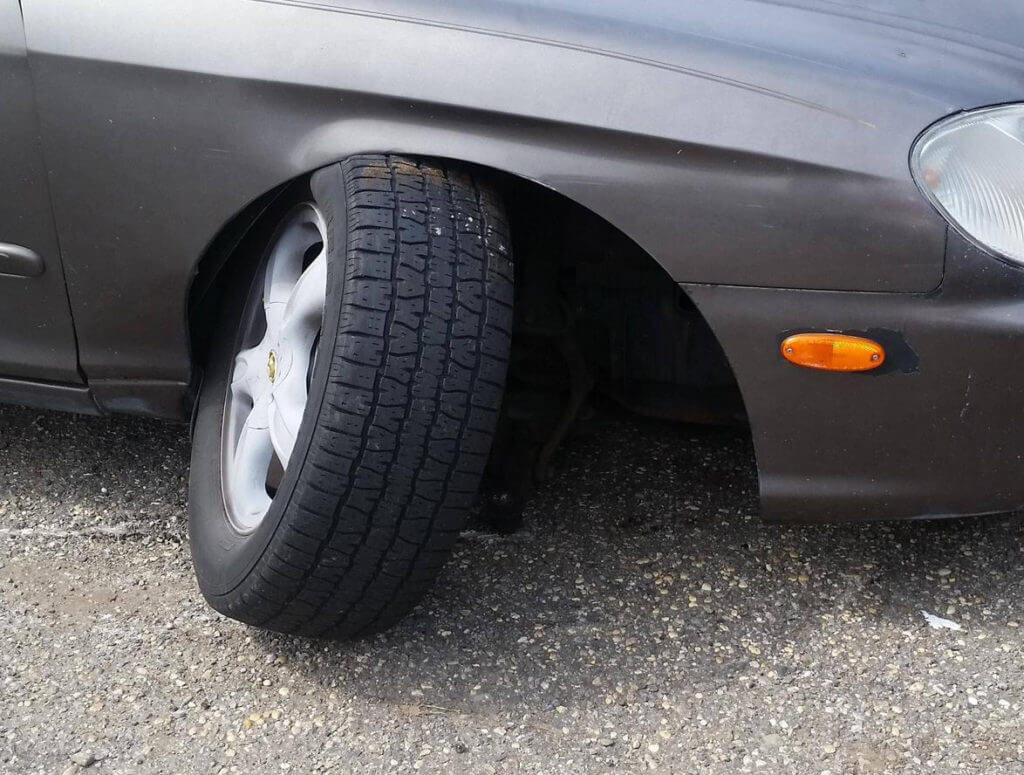
When the ball joint separates, there’s nothing holding the bottom of the wheel to the vehicle, so it buckles.
Yes! Just like a worn hip joint, a worn joint can separate while driving, possibly causing a life threatening accident. When a joint separates, there’s nothing holding the steering knuckle and wheel to the control arm. When no longer attached to the control arm, the wheel can rotate and become horizontal, causing the vehicle to skid on the brake rotor, or it can rotate 90°, causing the vehicle to skid sideways.
Ball joint replacement cost
To replace a ball joint, the technician must separate the steering knuckle from the tapered stud. Then, depending on the design, either press the old ball joint out, or drill out factory rivets to remove and replace the ball joint. After the new joint is installed and reconnected to the steering knuckle, the vehicle must be aligned.
Here’s an example of joint replacement cost on a 2010 Chevy Silverado.
This vehicle has an SLA type suspension, so there’s an upper and lower joint.
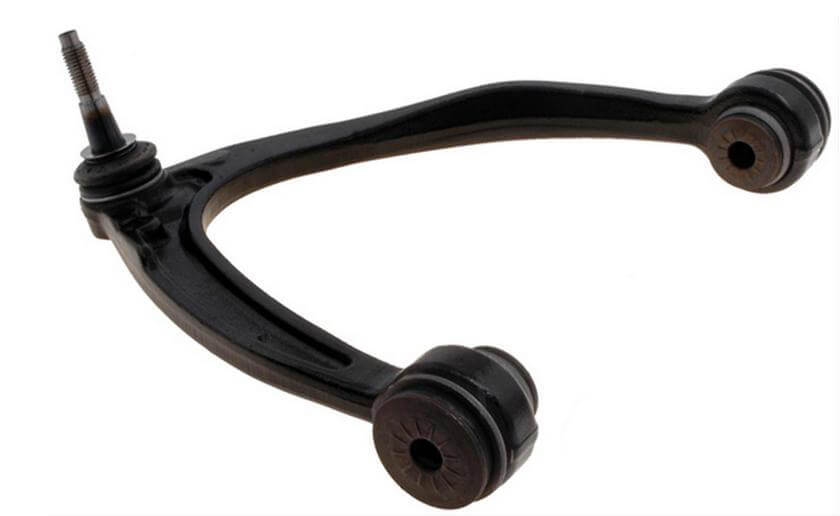
Genuine GM 19255770 Control arm
Generally, you should replace both at the same time. However, the upper joint in this vehicle cannot be replaced by itself, so the tech must replace the entire upper control arm with a new control arm/ball joint assembly.
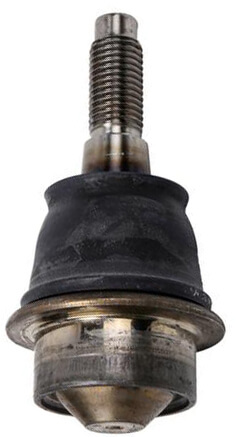
Genuine GM 19256481 ball joint
The Alldata flat rate guide shows a labor time of 2.5 hours to replace the upper control arm and lower joint. A genuine GM lower joint lists for $93.58 and a GM upper control arm lists for $230.43. With an hourly shop rate of $120/hr, this job would cost $420 labor (including alignment) and $324 for parts. Total joint replacement cost: $744
©, 2021 Rick Muscoplat
Posted on by Rick Muscoplat

